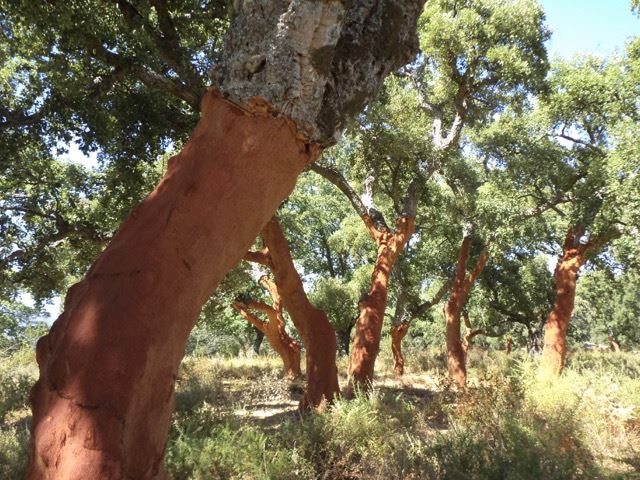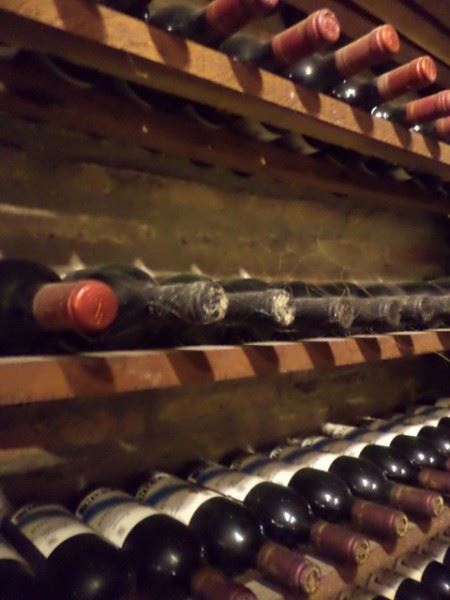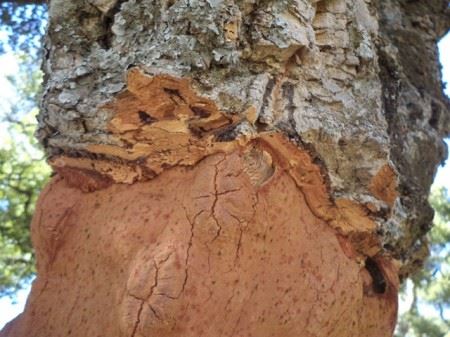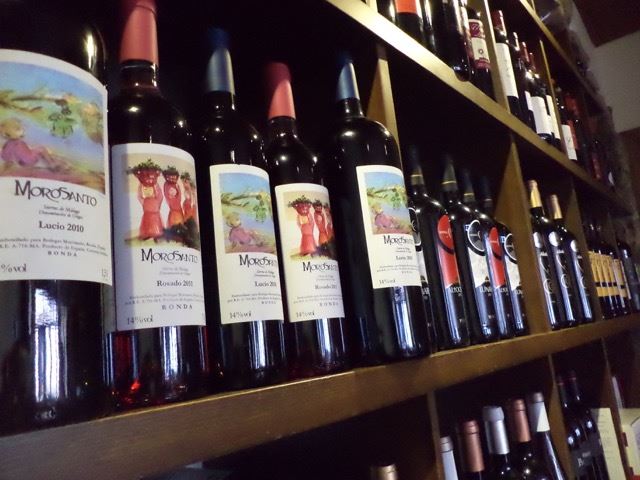 People may say what they like about the advantages of plastic corks and screw tops (lets not even talk about wine in Tetra packs…), but to me a well-made wine merits a real cork. I am not a wine snob, but probably a bit of a traditionalist. Particularly these days when everything is about convenience, it is important to keep some of the old rituals, such as the simple joy of pulling a cork out of a wine bottle. Hauling a wad of plastic out of your favourite vintage simply cannot compare. There is the earthy smell of the cork, the little squeaky sounds as one wiggles and pulls and finally the little pop as the cork emerges from the bottles’ neck. A perfect tool for the job, having served us for centuries, with still no man-made competitor when it comes to the longevity of real cork.
People may say what they like about the advantages of plastic corks and screw tops (lets not even talk about wine in Tetra packs…), but to me a well-made wine merits a real cork. I am not a wine snob, but probably a bit of a traditionalist. Particularly these days when everything is about convenience, it is important to keep some of the old rituals, such as the simple joy of pulling a cork out of a wine bottle. Hauling a wad of plastic out of your favourite vintage simply cannot compare. There is the earthy smell of the cork, the little squeaky sounds as one wiggles and pulls and finally the little pop as the cork emerges from the bottles’ neck. A perfect tool for the job, having served us for centuries, with still no man-made competitor when it comes to the longevity of real cork.
 The cork oak, a native tree of the Mediterranean, have been around for about 150 million years. Here in southern Spain, there is evidence that people worked with cork since about 4,000 BC. The Greeks, the Phoenicians, and later the Romans used cork as a sealant, enclosing their wines and other liquids in clay containers. However, it was not until the 17th century that a French Benedictine monk named Dom Pierre Pérignonreplaced the wooden peg formerly used and tried a cork as a bottle stopper. And corks have been produced basically the same way ever since.
The cork oak, a native tree of the Mediterranean, have been around for about 150 million years. Here in southern Spain, there is evidence that people worked with cork since about 4,000 BC. The Greeks, the Phoenicians, and later the Romans used cork as a sealant, enclosing their wines and other liquids in clay containers. However, it was not until the 17th century that a French Benedictine monk named Dom Pierre Pérignonreplaced the wooden peg formerly used and tried a cork as a bottle stopper. And corks have been produced basically the same way ever since.
The job of a wine closure is to keep the wine in and oxygen out, as simple as that. Wine types, laws and regulations, tradition, current fashion and last but not least cost all influence the bottle closures selected by the producer. Alternative wine closures came quite recently onto the scene. Screw caps have been around since the mid-sixties and are generally used by New Zealand and Australian wine producers. Plastic and synthetic stoppers are rapidly replacing natural cork. On a global level, most wines now favour synthetic corks, though these types of bottle sealants are not suited for long-term storage. So, is this tendency all about the mighty buck?
 Wine closure alternatives were developed by winemakers wanting to prevent loss due to ‘cork taint’, when a wine gets spoiled by air penetrating the cork. ‘Cork taint’ affects about 3% of wines using traditional cork, making it seem like an undependable choice to some producers. (Yet, have you ever seen a champagne bottle with a plastic cork?) Due to its natural growth and harvest, corks are 2-3 times more expensive than the synthetic alternatives. Being a natural product, the quality vary, and producers may choose a lower grade cork to save cost. Some of the alleged drawbacks of natural cork may be blamed on the lower grade technical agglomerated cork products, which is a bit like comparing particle-board and MDF to hardwood. And as with real wood, you have to pay for quality.
Wine closure alternatives were developed by winemakers wanting to prevent loss due to ‘cork taint’, when a wine gets spoiled by air penetrating the cork. ‘Cork taint’ affects about 3% of wines using traditional cork, making it seem like an undependable choice to some producers. (Yet, have you ever seen a champagne bottle with a plastic cork?) Due to its natural growth and harvest, corks are 2-3 times more expensive than the synthetic alternatives. Being a natural product, the quality vary, and producers may choose a lower grade cork to save cost. Some of the alleged drawbacks of natural cork may be blamed on the lower grade technical agglomerated cork products, which is a bit like comparing particle-board and MDF to hardwood. And as with real wood, you have to pay for quality.
Cork advocates argue that alternatives don’t allow the alcohol to breathe naturally. Cork is the single best natural product malleable enough to hold content inside a glass bottle. A substance found in the cork cells stops the passage of air and liquid through the cork. Natural cork bottle enclosures have many advantages: they are natural, flexible and compressible, with amazing anti-slip properties. It is biodegradable, recyclable and grows in the wild, thus promoting biodiversity. Unlike synthetic closures, a natural cork expands and contracts with a slightest temperature fluctuations, maintaining a perfectly tight seal, even as the glass of the bottle itself also minutely changes.
 Cork is the prime choice for long-term wine storage, where the present alternatives cannot compete. As a testament to the amazing sealant qualities of natural cork, imagine the incredible pressure the bottles found in the Titanic wreckage had been exposed to, still with the corks intact! In 2010, a ship was found at the bottom of the Baltic Sea, 50 meters blow sea level, containing 169 bottles of champagne, having survived since the mid-19th century and apparently being quite quaffable, at that. The darkness, plus constant, low temperature are perfect aging conditions for wine, which is why some producers, such as Ronda’s organic wine producer Schwartz, are experimenting with storing some of their best vintages under water.
Cork is the prime choice for long-term wine storage, where the present alternatives cannot compete. As a testament to the amazing sealant qualities of natural cork, imagine the incredible pressure the bottles found in the Titanic wreckage had been exposed to, still with the corks intact! In 2010, a ship was found at the bottom of the Baltic Sea, 50 meters blow sea level, containing 169 bottles of champagne, having survived since the mid-19th century and apparently being quite quaffable, at that. The darkness, plus constant, low temperature are perfect aging conditions for wine, which is why some producers, such as Ronda’s organic wine producer Schwartz, are experimenting with storing some of their best vintages under water.
As the worldwide demand for wine is growing and new wine markets are emerging, there isn’t currently enough cork grown to supply all producers. I am not saying that all wine needs the real thing. Just that there is a fallacy, especially in North America, where the misconception is that cork is a depleting resource and that cork trees are dying out. They are not. We are just drinking more and more, and want our wine to be cheaper and cheaper. Since the majority of cork production goes towards wine production, the real threat to cork production is the decline in demand, due to the cheaper synthetic alternatives. The WWF has actually started a cork conservation campaign, encouraging consumers to buy wine with real wine corks to help the industry stay alive. Cork extraction is one of the most environmentally friendly harvesting processes there is. Not a single tree is cut down to get the cork!
 Living in inland Andalucia, we have the privilege and joy of being able to see the cork forests up close. In the mountainous, rural Western Andalucía, between the towns of Gaucin, Urbique and Ronda, and nearly all the way to Algeciras in the south, one can observe the traditional (and virtually unchanged) harvest methods of cork happening between June and August every year. The cork, which actually is a type of parasite on the bark of the trees, is carefully retrieved with special knives or hatchets, peeling away the outer cork bark, leaving the inner bark intact. The cork trees are nothing short of amazing. After the first 20 years of growth, they can produce cork for over 150 years, even though it may have been stripped at nine-year intervals. Being a cork harvester, now a special 2-year college education, is a skill handed down from generation to generation. The cork is only cut off once every nine years, allowing the trees time to regenerate. Once the ‘sheets of cork are brought to the plants, corks are stamped out by machines with different widths for wine, champagne or cognac.
Living in inland Andalucia, we have the privilege and joy of being able to see the cork forests up close. In the mountainous, rural Western Andalucía, between the towns of Gaucin, Urbique and Ronda, and nearly all the way to Algeciras in the south, one can observe the traditional (and virtually unchanged) harvest methods of cork happening between June and August every year. The cork, which actually is a type of parasite on the bark of the trees, is carefully retrieved with special knives or hatchets, peeling away the outer cork bark, leaving the inner bark intact. The cork trees are nothing short of amazing. After the first 20 years of growth, they can produce cork for over 150 years, even though it may have been stripped at nine-year intervals. Being a cork harvester, now a special 2-year college education, is a skill handed down from generation to generation. The cork is only cut off once every nine years, allowing the trees time to regenerate. Once the ‘sheets of cork are brought to the plants, corks are stamped out by machines with different widths for wine, champagne or cognac.
 Andalucia’s Bosque de los Alcornocales, a protected Natural Park, is Spain’s biggest plantation. However, there is nothing plantation-like at all about the cork forests. The trees grow wild amongst other oaks and natural shrubbery, often in incredible inclines where rope and donkeys have to be used to bring in the harvest, as mechanical aids would not be of much help. Spain is the worlds’ second biggest producer of cork (after Portugal) with an industry worth an estimated two billion dollars a year. With its impermeable, buoyant, elastic, and fire retardant properties, cork is also used in diverse processes from car construction to aeroplane insulation.
Andalucia’s Bosque de los Alcornocales, a protected Natural Park, is Spain’s biggest plantation. However, there is nothing plantation-like at all about the cork forests. The trees grow wild amongst other oaks and natural shrubbery, often in incredible inclines where rope and donkeys have to be used to bring in the harvest, as mechanical aids would not be of much help. Spain is the worlds’ second biggest producer of cork (after Portugal) with an industry worth an estimated two billion dollars a year. With its impermeable, buoyant, elastic, and fire retardant properties, cork is also used in diverse processes from car construction to aeroplane insulation.
Clearly, preference in wine and bottle enclosures is a personal thing and there is much more to be said in this debate. But next time you grab a bottle and find a REAL cork, take a deep breath to smell its earthy past and send a small thank to the tree that offered its coat for your drinking pleasure. Cheers!
